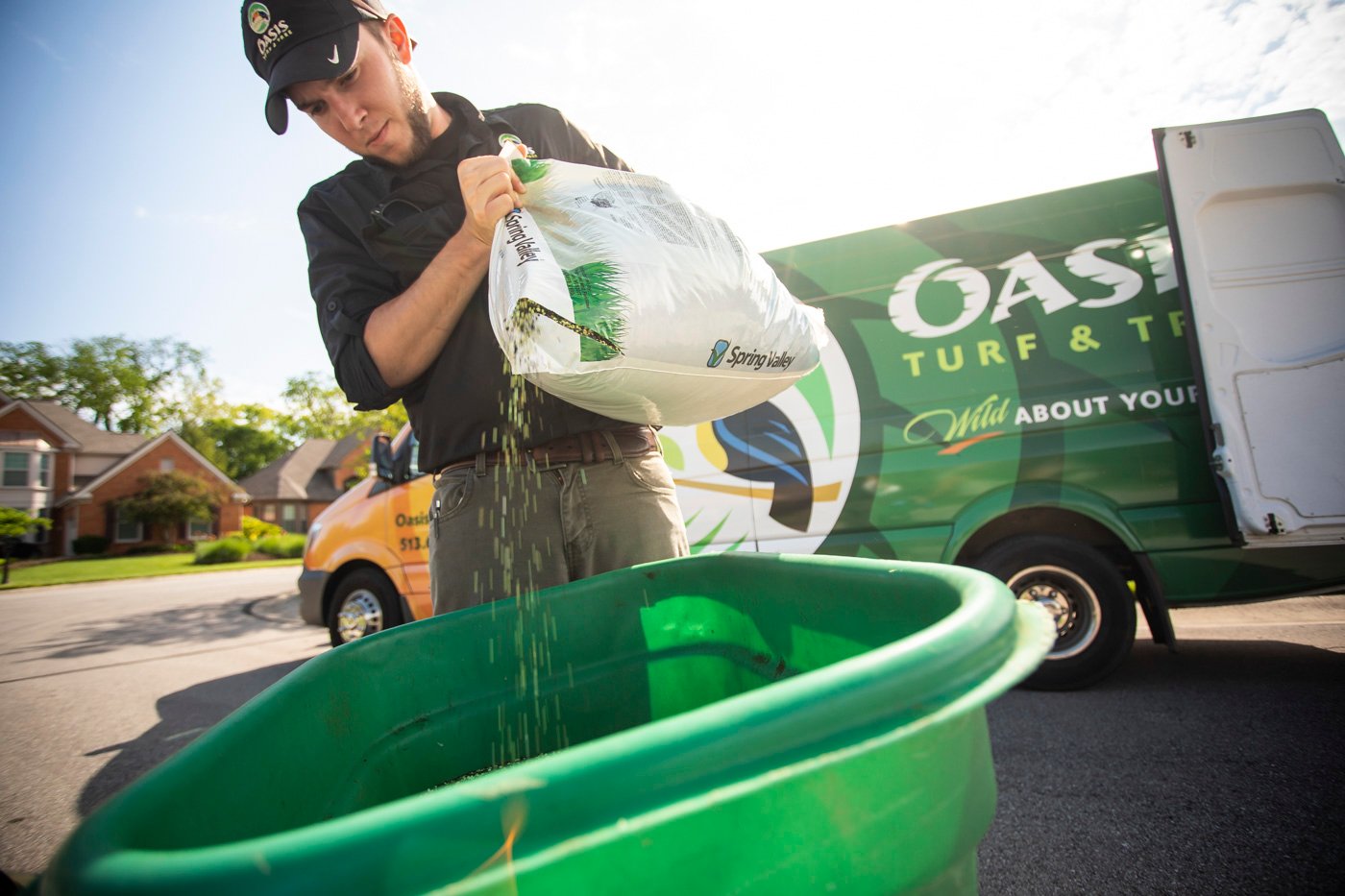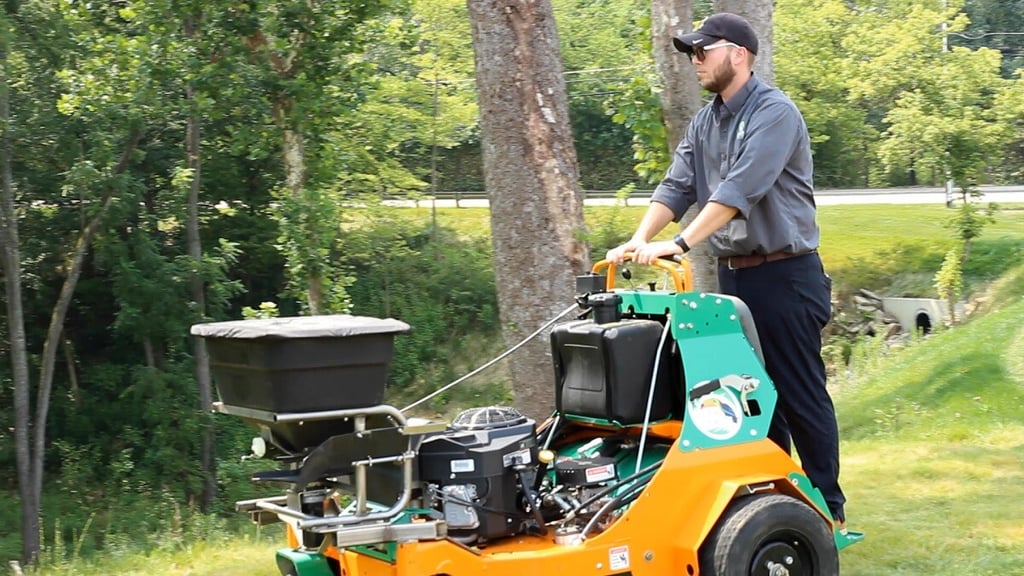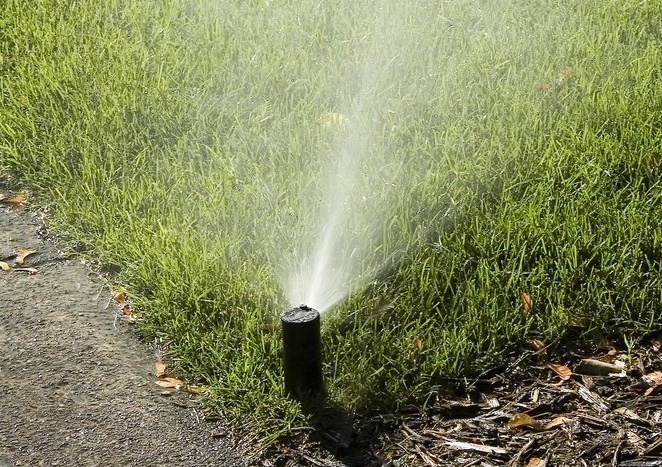A lawn that has thin or bare areas can be a major source of frustration. But how to make grass thicker can sometimes feel like an elusive issue. In fact, you might have even tried a lot of different things and still aren’t getting the results that you desire. You just want some cut and dry answers as to how to achieve a fuller lawn that you can be proud to show off.
That’s why we’re trying to take the mystery out of it all. We’re talking about how to make grass thicker and fuller so that you can stop stressing and start enjoying your lawn.
How to Make Grass Thicker: 4 Important Tips
Each of these methods will play a role in how to make grass thicker and fuller. However, we want to stress that you can’t just pick and choose from the list. In order to truly get the best possible results, it’s all of these tips working in tandem that help to thicken a lawn.
1. Use the Best Fertilizer to Thicken Grass
If we had to guess, we’d assume that this is probably the first thing that already came to mind for you. Most people understand that fertilization helps to thicken a lawn. However, you want to make sure that you are using the best fertilizer to thicken grass if you truly want to get the best results. What a lot of people don’t understand is that not all fertilizer products are created equally.
A big difference with the fertilizer used by Oasis Turf & Tree is that we’re utilizing a high-quality, professional-grade fertilizer that includes the optimal ratios of Nitrogen (N), Phosphorus (P) and Potassium (K). N-P-K is typically represented on a bag of fertilizer in that order with the percentages. But oftentimes, Phosphorus is left off of products sold in multiple states since some states have regulations related to this nutrient.
However, this is a huge disservice to your lawn. The best fertilizer to thicken grass must contain Phosphorus. It’s an essential nutrient that helps to stimulate root growth and enhance plant vigor and soil tests have revealed it is greatly needed in our region.

Another big difference in our fertilizer is that it has an organic base with added biostimulants, which add incredibly beneficial microorganisms to the soil. This goes well beyond what a typical bag of fertilizer can do for your lawn.
The fact is, the true secret to a thick and healthy lawn lies in the soil. But we find that soil health is often overlooked, even by professional lawn care companies. It may even be the reason why you’re not achieving the results you desire.
2. Apply The Right Amount of Fertilizer at The Best Time
On top of the high-quality fertilizer that we’re using, we’re also applying it at just the right time and just the right application rate. Both of these are incredibly important when it comes to how to make grass thicker and fuller. Lawns perform better when they are “spoonfed” what they need in proper increments.
But many lawn care companies will shortchange you by just coming out 3 or 4 times and dumping too much fertilizer at once.

At Oasis Turf & Tree, we’re applying just the right amount of product which is determined by using data derived from soil tests.
3. Aerate & Overseed Your Lawn
If you’re looking for thicker grass, then you’ll also want to make sure that you’re having aeration and overseeding performed at your property. One of the main reasons to aerate your lawn is to alleviate soil compaction. Compacted soil prevents proper circulation of air, water and nutrients within the soil—elements that your lawn really needs to grow thick and healthy.

Overseeding at the time of aeration is also a best practice when it comes to filling in thin or bare spots. Seed germination requires seed-to-soil contact. Fortunately, aerating your lawn creates small holes in the soil and brings soil plugs to the surface that allows for seeds to directly contact loosened soil. These areas provide new grass seedlings with favorable conditions to grow and mature their new root system. Overseeding is an effective way to fill in small bare spots, improve the density of the grass and enhance the color of your lawn over time.
The key is to make sure you’re seeding with the best grass type for our region. We’ve looked at quite a bit of research to determine that Turf Type Tall Fescue blend is the best grass seed for our customers’ lawns.
4. Mow and Water Your Lawn Properly
So far, the methods that we’ve talked about have been services that a lawn care professional can handle for you. But it’s important to recognize that the cultural practices you perform on your own also make a tremendous difference in your lawn’s overall health (as well as how effective your lawn care results are). Most importantly, watering and mowing are essential to your lawn’s thickness.
Let’s look at each.
Proper Lawn Mowing
Mowing seems like such a basic task that most people assume they can’t do it wrong. But that’s not the case. The vast majority of the time, homeowners (and even some professional mowers) cut the grass too short. When a lawn is mowed too short, you create an environment that is more prone to weed growth. It also puts a lot of stress on the lawn and can cause it to thin out. We recommend a mowing height of at least 3.5 inches.
On top of that, we advise mowing weekly (as opposed to bi-weekly) so that you can cut no more than one-third of the glass blade at a time. Any more than that puts too much stress on the lawn.
You also want to make sure that you’re mowing with a level deck and a sharp blade. The idea is to put as little stress as possible on your lawn when mowing.
Proper Watering
Watering is also essential in terms of how to make grass thicker. Lawns need one inch of water per week. During certain times of the year, Mother Nature may provide enough rainfall to keep your grass growing. However, it’s common to have dry spells for several weeks or more.
If that’s the case, water your lawn 1 to 2 times per week with a deep soaking. We’ve written an entire article on proper watering so that you can have all the details on frequency, duration, and amount and how they contribute to a thicker, healthier lawn

If Thickening Your Lawn Sounds Complicated, Let Us Remove the Guesswork
While we tried to simplify these methods into 4 categories, we understand that it’s complicated. Each category has its own set of nuances and best practices that must be followed in order to achieve the results you’re after.
We get it and honestly, that’s also why people tend to turn to a professional.
Not only does it mean better products and better practices, it also means no guesswork on your end. That adds up to better results and less headaches.
After all, at the end of the day, you don’t hire Oasis Turf & Tree to get rid of your weeds or to make your lawn thicker—you hire us to take away your worries. While we certainly do those things, people value us most for figuring out what their lawn needs so they don’t have to.
Ready to learn about professional lawn care services from Oasis Turf & Tree for your Cincinnati, Dayton, Ohio, or Northern Kentucky home? Request your quote, choose the lawn care program that’s right for you, and then sit back and relax as the pros take away your worries and help you get the lawn of your dreams!

